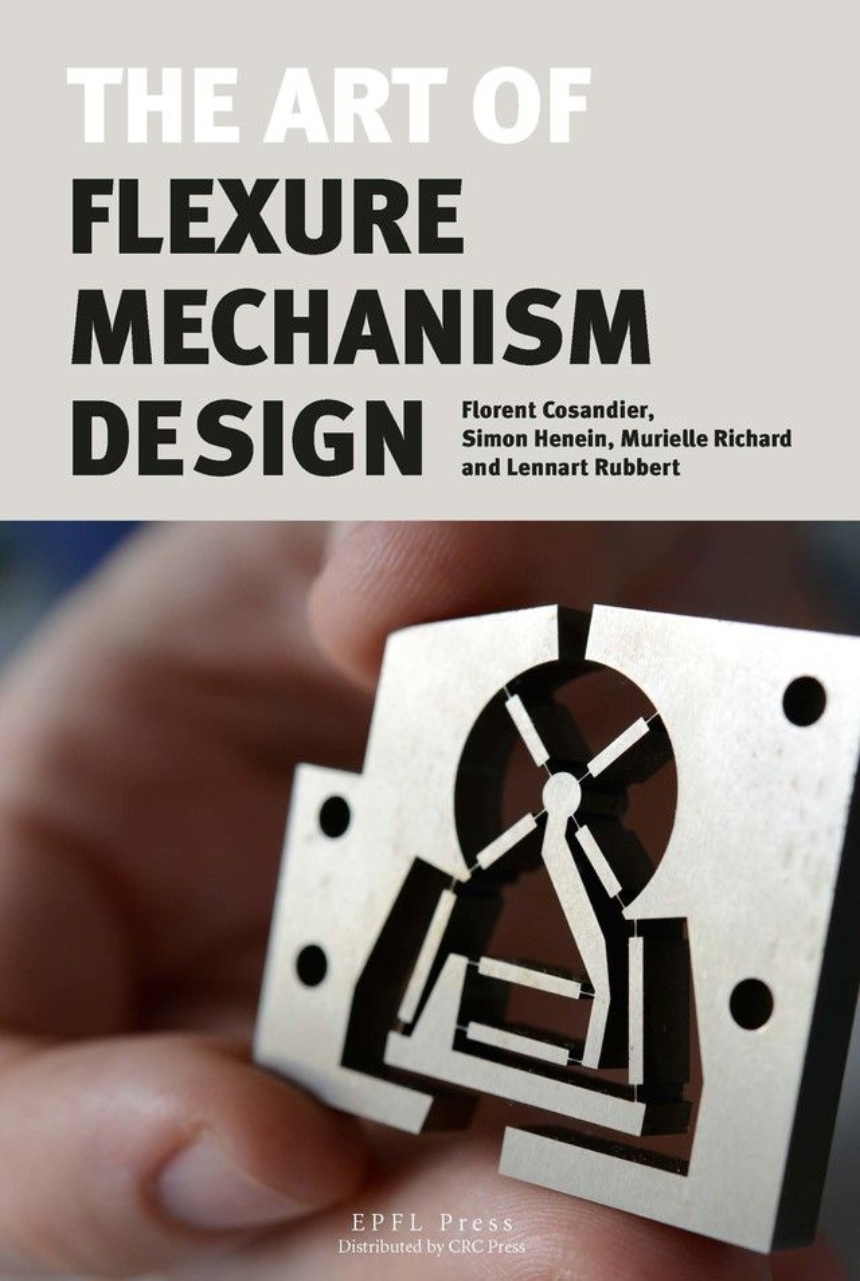Distributed for EPFL Press
The Art of Flexure mechanism Design
Flexure mechanism design is an art, and this book provides the theoretical and practical foundation for scientists and engineers to express their creativity in this field. Flexure mechanisms, also known as compliant mechanisms, rely on the elasticity of matter to provide motion to mechanism linkages. Flexure mechanisms eliminate the disadvantages of classical joints: friction, wear, lubrication and play, while permitting monolithic design. Flexure-based mechanisms have gained prominence in a wide variety of fields including robotics, surgical instrumentation, aerospace, astronomy, particle accelerators, metrology and horology. This book establishes a conceptual framework for the design of flexure-based articulated structures. Topics featured deal with the theoretical foundations for the design of translational and rotational flexures, the simple kinematic analysis of flexure-based mechanisms, and advanced kinematic approaches to the design of complex flexure-based mechanisms using modules in parallel or serial arrangements. The book also features detailed examples of long stroke flexure mechanisms used in metrology applications, and a detailed example of planar flexure mechanisms having out of plane functionality and used in surgical applications. This book aims to provide scientists and engineers with a conceptual tool, an analytic methodology and the key references for their precision engineering needs.
308 pages | 6 1/4 x 9 1/2 | © 2017
Table of Contents
1 Introduction (Simon Henein) – Flexure bearing importance – Flexible element classification – Book goals and structure – Topic delimitationI BASIC FLEXURES:2 Underlying theory (Simon Henein) – Basic assumptions – Allowable deflections – Stiffnesses3 Flexure joint elements (Simon Henein) – General considerations – Leaf springs – Rods – Torsion bars – Circular notch hingesTranslational flexures (Simon Henein) – Two parallel leaf spring stage – Overconstrained stage with four parallel leaf springs – Four prismatic notch hinge stage – Four circular notch hinge stage – Conclusion on linear translation bearings5 Rotational flexures (Simon Henein) – Separate cross spring pivot – Joined cross spring pivot – RCC pivot with two leaf springs – RCC pivot with four notch hinges – Cross pivot with four notch hinges – Comparison of the pivots – Radial loads – Overconstrained pivot with three leaf springsII FLEXURE MECHANISMS:6 Flexure structures (Simon Henein) – Kinematics – Choice of materials – Working envelope – Stiffnesses7 Modular design of flexure-based robots (Murielle Richard) – Introduction – Concept of modular kinematics – Reduced solution catalogue for ultra-high precision – Mechanical design of the building bricks – Case study: 5-DOF ultra-high precision robot – Ultra-high precision parallel robot family – Conclusion – Final note8 Rectilinear flexure mechanisms (Florent Cosandier) – Introduction – Rectilinear kinematics – Sarrus guiding mechanism – 13-hinge stage mechanism – Analysis and comparison – Application to the watt balance – Conclusions9 Out-of-plane flexure mechanisms (Lennart Rubbert) – Introduction – Example: design of an active cardiac stabiliser – In the vicinity of singularities – Optimisation of the spherical compliant joint – Exploiting the singularities of parallel mechanisms – Selection of an actuation mechanism – Integration of the three mechanisms in two planes – Conclusion
